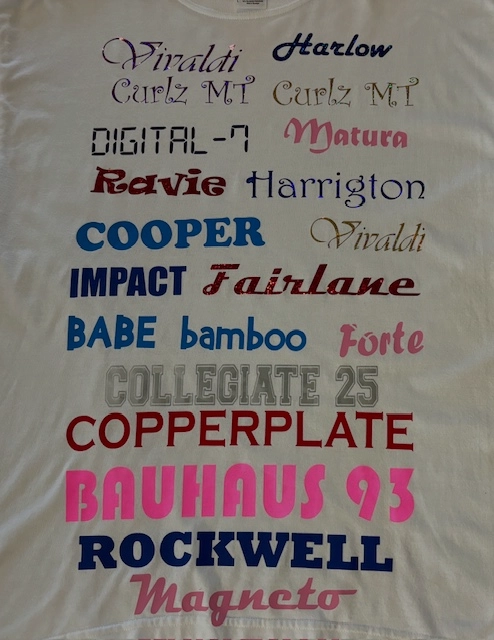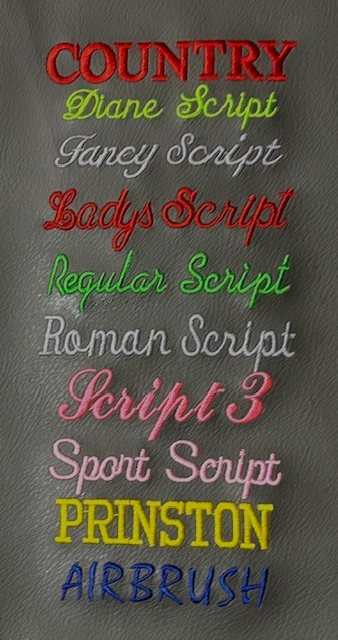Customized Lab Coats with Embroidery for Medical Professionals
Customized Lab Coats with Embroidery for Medical Professionals
Blog Article
The Art of Custom-made Needlework: Opening the Secrets to Creating Unique and Memorable Layouts
The tricks to producing customized embroidery layouts that mesmerize the eye and leave an enduring impression lie in a fragile equilibrium of method, imagination, and interest to information. As we delve right into the globe of customized embroidery, we reveal the nuanced interaction between thread option, sew intricacy, and design personalization that boosts a plain garment to a job of art.
Selecting the Right Embroidery Threads
When selecting needlework threads, what crucial elements should you take into consideration to guarantee the very best results for your custom layouts? The option of embroidery thread is crucial in determining the last outcome of your embroidered style. Among the primary considerations is the product of the string. Various products such as cotton, polyester, rayon, and silk offer varying levels of shine, durability, and texture. It is necessary to pick a string product that complements the fabric you are embroidering on and lines up with the preferred look of the style.
Furthermore, the weight or thickness of the thread plays a significant function in the appearance of the embroidery. Thicker threads can include measurement and structure to your style, while finer strings are ideal for elaborate details and little message. In addition, considering the color fastness and washability of the thread is critical to ensure that your customized layouts maintain their quality and vibrancy gradually. By meticulously examining these aspects and picking top notch strings that satisfy your particular requirements, you can enhance the aesthetic appeal and longevity of your stitched productions.
Exploring Different Stitch Techniques
To look into the realm of 'Discovering Different Stitch Techniques', one must realize the ins and outs and nuances that each stitching approach offers the art of needlework. Different stitch techniques not just add aesthetic rate of interest yet also add to the overall structure and measurement of the design. One prominent stitch strategy is the satin stitch, which includes very closely packed parallel stitches to produce a smooth and glossy surface, perfect for filling up in forms and creating vibrant describes.
On the various other hand, the backstitch is a versatile method often utilized for laying out and adding fine information. It involves stitching in reverse to create a solid line of needlework. Additionally, the French knot stitch includes a responsive element to styles, excellent for creating textured accents like blossom centers or decorative touches.
Checking out various stitch strategies allows embroiderers to have fun with light, darkness, and deepness within their layouts, elevating the visual appeal and artistic high quality of their needlework tasks. By understanding various stitching techniques, one can open countless possibilities for producing one-of-a-kind and memorable custom embroidery pieces.
Incorporating Personalized Layout Components
Having explored the intricacies of various stitch methods such as the satin stitch, backstitch, and French knot, the visite site focus currently shifts in the direction of integrating individualized design components in custom-made embroidery tasks. Customized design components play a vital role in making needlework jobs absolutely special and memorable.
An additional method to include tailored design components is by including symbols or themes that hold special definition to the recipient or show their interests and character. For instance, including a preferred flower, pet, or hobby-related sign can make the embroidery layout extra significant and personalized. In addition, choosing shades that resonate with the recipient or straighten with the intended motif can even more boost the personalization of the embroidery job.
Mastering the Art of Shade Coordination

One secret aspect of shade sychronisation is understanding color theory. This consists of understanding exactly how different shades communicate with each other, the feelings they convey, and just how like this they can be integrated to develop visually enticing styles. By using shade theory principles, embroiderers can develop harmonious shade palettes that boost the general appearance of the design.
In addition, paying attention to comparison is critical in color control. Using contrasting shades can assist specific elements of the design pop, enhance readability, and create an aesthetically vibrant embroidery item. read what he said By mastering the art of shade control, embroiderers can raise their layouts and produce memorable pieces that reverberate with clients and visitors alike.
Enhancing Texture With Advanced Needlework Stitches

French knots, for instance, are perfect for adding little, increased dots to your style, resembling the appearance of grains or creating a textured surface. Bullion knots, on the other hand, can be utilized to produce twisted, ropelike aspects that include a luxurious feel to the embroidery. Seed stitching includes small, scattered stitches that can fill out locations with a polychromatic appearance, while turkey job develops cosy, dimensional accents evocative pet hair or vegetation. Explore these innovative needlework stitches enables you to push the limits of conventional embroidery and create truly unique and visually enticing appearances in your layouts.
Final Thought
To conclude, the art of customized embroidery involves a mix of selecting the best threads, discovering numerous stitch methods, integrating individualized style aspects, grasping color control, and boosting structure with advanced stitches. By comprehending and executing these key components, embroiderers can develop distinct and memorable layouts that showcase their creativity and ability. Embroidery enthusiasts can open the tricks to creating attractive and bespoke pieces that stick out and leave an enduring impression.
Report this page